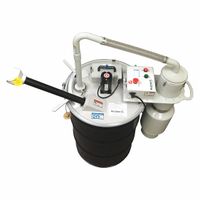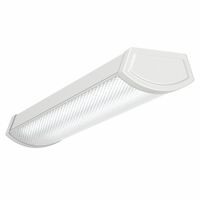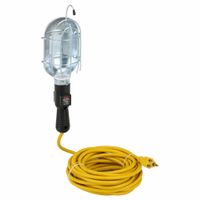Call +(254) 703 030 000 / 751 483 999 / 721 704 777
- Home
- Lighting
.....Read More
Frequently Asked Questions
What are the different types of lighting?
Lighting can be broadly categorized into several types, each serving different purposes. Ambient or general lighting provides overall illumination for a space, often achieved with ceiling fixtures. Task lighting is focused and brighter, designed for specific activities like reading or cooking, utilizing lamps or under-cabinet lights. Accent lighting highlights specific objects or areas, creating visual interest, and commonly uses spotlights or track lighting. Decorative lighting, while providing some illumination, primarily enhances the aesthetic of a room. Finally, natural lighting, from windows and skylights, offers a dynamic and energy-efficient source of light.
How do I choose the right lighting for my home?
Choosing the right lighting for your home involves considering both function and aesthetics. Start by identifying the purpose of each space: ambient lighting for general illumination, task lighting for specific activities like reading or cooking, and accent lighting to highlight features.
Consider color temperature; warmer tones create a cozy atmosphere, while cooler tones are better for focused tasks. Layering different light sources adds depth and versatility. Think about dimmer switches for flexibility and energy efficiency. Finally, choose fixtures that complement your home's style and design.
What is the difference between LED and incandescent bulbs?
LED (Light Emitting Diode) and incandescent bulbs differ significantly. Incandescent bulbs produce light by heating a filament, which makes them inefficient as much energy is lost as heat. They have a shorter lifespan, typically around 1,000-2,000 hours.
LEDs, on the other hand, generate light through the movement of electrons in a semiconductor material. This process is much more efficient, converting most energy into light rather than heat. Consequently, LEDs consume less power, have a much longer lifespan (25,000-50,000 hours or more), and are more durable. While LEDs generally have a higher upfront cost, their energy savings and longevity make them more economical over time.
How can I improve the lighting in my room?
Improving the lighting in a room involves several strategies. Start by maximizing natural light: keep windows unobstructed, use light-colored curtains, and consider reflective surfaces like mirrors to bounce light around. For artificial lighting, layer different types: ambient (general illumination), task (for specific activities like reading), and accent (to highlight features). Choose appropriate light temperatures; warmer tones create a cozy atmosphere, while cooler tones are better for focused tasks. Dimmers offer flexibility to adjust brightness. Consider adding lamps in dark corners, using LED bulbs for energy efficiency, and cleaning light fixtures regularly to maintain their effectiveness.
What is the best lighting for reading?
The best lighting for reading involves a combination of factors to minimize eye strain and enhance comfort. Ideally, aim for soft, diffuse light that illuminates the page evenly without creating harsh glare or shadows. A task lamp with an adjustable arm allows you to direct light precisely where needed. Opt for LED bulbs with a color temperature between 2700K and 4000K (warm white to cool white) for optimal readability. Ensure the overall room lighting is not too dim, as a stark contrast between the reading light and the ambient light can also be tiring for the eyes. Avoid direct overhead lights that create shadows on the page.
How do I install recessed lighting?
Installing recessed lighting involves several steps. First, turn off the power to the circuit you'll be working on. Cut holes in the ceiling for the can lights, ensuring proper spacing and clearance from joists. Run electrical wire to each fixture, connecting it to the existing circuit. Install the can lights into the ceiling, securing them with clips or springs. Finally, connect the trim and bulb. If you're unsure about any step, it's best to consult a licensed electrician to ensure safety and proper installation.
What are the benefits of smart lighting?
Smart lighting offers numerous benefits, enhancing convenience, energy efficiency, and security in homes and businesses. Users can control lights remotely via smartphones or voice commands, schedule on/off times, and adjust brightness and color temperature to suit different moods or tasks. This intelligent control significantly reduces energy consumption, as lights can be dimmed or turned off when not needed, leading to lower utility bills. Additionally, smart lighting can improve security by simulating occupancy when residents are away, deterring potential intruders. Some systems also integrate with other smart home devices, creating automated routines for a more comfortable and secure environment.
How much lighting do I need for a specific room?
The amount of lighting needed for a specific room depends on its size, purpose, and the desired ambiance. A general guideline is to aim for 20 lumens per square foot for ambient lighting in living areas and bedrooms, while kitchens and bathrooms may require 50-70 lumens per square foot for task lighting. Consider layering light sources, including ambient, task, and accent lighting, to create a well-lit and versatile space. Utilizing dimmers also offers flexibility in adjusting light levels for various activities and moods.
What is color temperature in lighting?
Color temperature describes the warmth or coolness of light, measured in Kelvin (K). Lower Kelvin values (e.g., 2700K-3000K) produce a warm, yellowish light, often associated with incandescent bulbs and creating a cozy ambiance. Higher Kelvin values (e.g., 5000K-6500K) yield a cool, bluish-white light, similar to natural daylight, promoting alertness and suitable for task lighting. The choice of color temperature impacts mood, visual clarity, and the perceived colors of objects in a space, making it a crucial consideration in lighting design.
How can I save energy with lighting?
To save energy with lighting, switch to LED bulbs, which consume significantly less power and last longer than traditional incandescent or fluorescent lights. Maximize natural light by opening blinds and curtains during the day, and consider light-colored walls to reflect more sunlight. Utilize motion sensors or timers in low-traffic areas to ensure lights are only on when needed. Regularly clean light fixtures and bulbs to maintain optimal brightness. Additionally, unplug decorative lights and chargers when not in use, as they can still draw small amounts of "phantom" energy.









